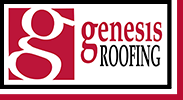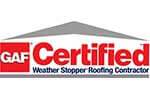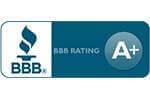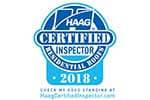Winter brings a unique set of challenges for homeowners. Apart from temperatures dipping low, snow can accumulate on the roof quickly. Without proper maintenance and care from a licensed roofing contractor, it can suffer significant damage during this time of year. In this blog post, we will discuss the most common types of winter roof damage and provide prevention techniques and steps to take if repairs are necessary.

Prevention Techniques
Here’s how to prevent or mitigate winter roof damage:
- Prioritize roof maintenance. Regular inspection is key! Inspect your roof twice a year — one in spring and another in fall. This allows you to identify any minor problems before they become major ones due to winter weather conditions. Clean gutters are essential, too; clogged gutters lead to increased chances for ice dams which cause further damage like mold growth along walls inside homes.
- Use roofing materials suited for winter conditions. If you are planning to invest in a new roof soon, consider either asphalt composition shingles or metal panels. Either option can help shed snow more easily.
- Insulate your home properly. Make sure the attic has adequate insulation to minimize heat loss during the winter. This also helps reduce the likelihood of ice dam formation.
- Seal openings. Install weather stripping around windows and doors so cold air stays out, thus helping prevent cold drafts from entering.
Common Types of Winter Roof Damage
The following are the most common types of damage every roofing company deals with during winter:
- Ice damage. Ice dams occur when heat from inside a home escapes through the attic into the rooftop, melting snow and allowing it to run down the sloped surface. When melted snow reaches cold air, it freezes again and creates an ice dam at the edge of a house’s overhang or gutter system. This causes water to seep under the roof shingles, resulting in leaks, wood rot, mold growth, and other serious structural issues.
- Snow damage. Heavy snow accumulation can damage roofs during winter months. The added weight from precipitation buildup causes extra strain on support beams and framing materials. This can lead to collapses, especially in older constructions.
- Wind damage. High winds during inclement weather conditions can lift weak points along a home’s exterior façade, such as corners or eaves. When the wind pressure is greater, weakened seams around the roof’s flashing tear or break apart, leaving them vulnerable to leaking water through open gaps.
Repairing a Roof Damaged by Winter Weather
A thorough assessment is an important step when dealing with winter roof damage. If there’s isolated damage on the roof covering, it’s best to replace them immediately to prevent water leakage and structural damage. Additionally, check all flashings and other roof components, and have them replaced if needed. However, if the damage is too significant to be fixed with simple repairs, you may have to work with a local roofer who provides exceptional roof replacement services.
For your residential roofing needs, turn to Genesis Roofing. Our team specializes in all types of roofing services and can help you get your home ready for the winter weather ahead. Give us a call today at (515) 202-1667, or fill out our contact form to schedule a free estimate. We serve homeowners in and around Clive, IA.











